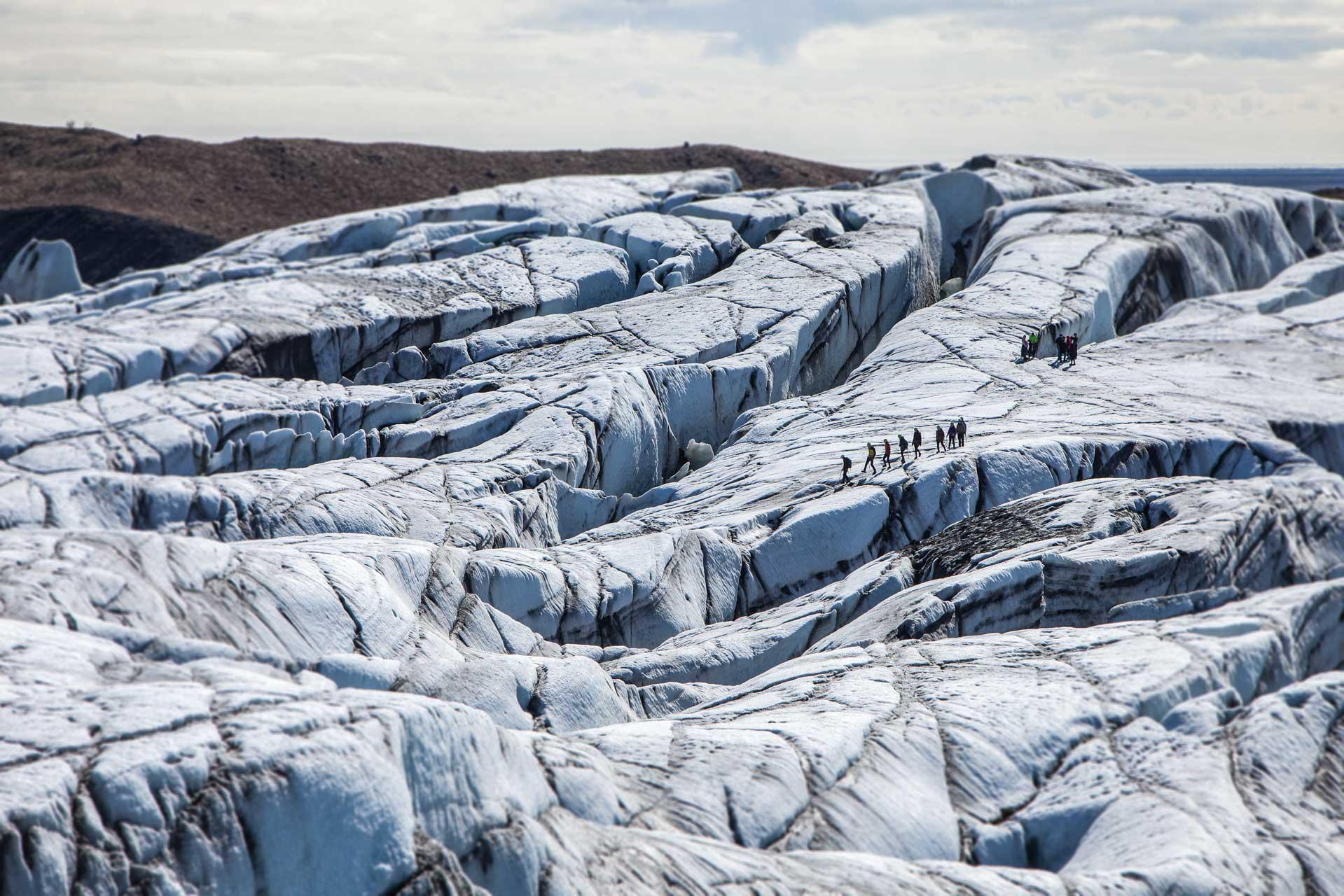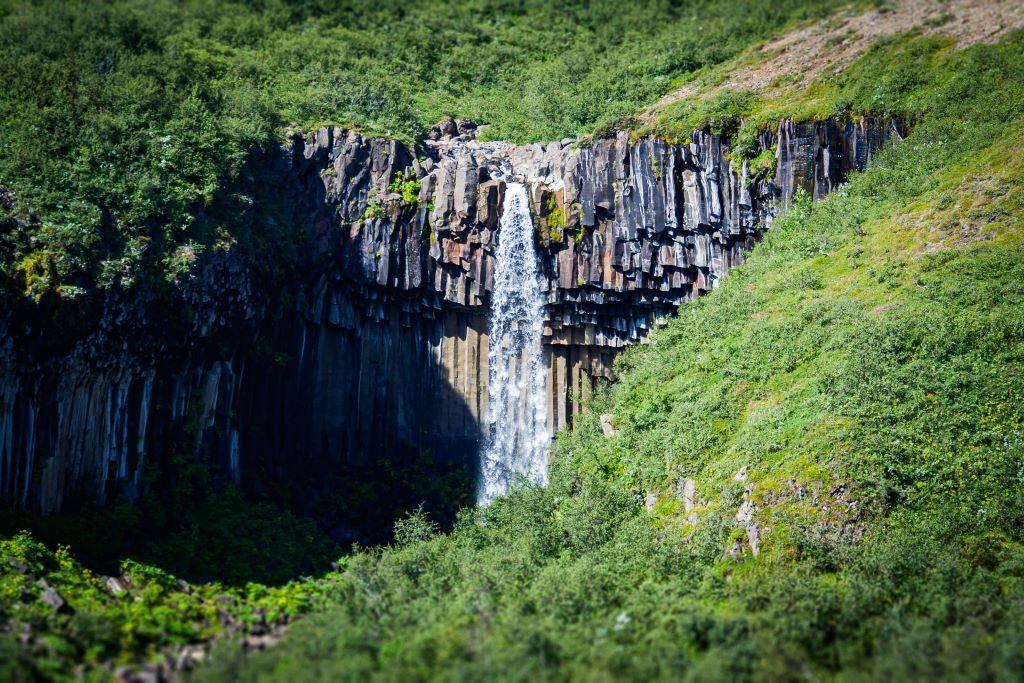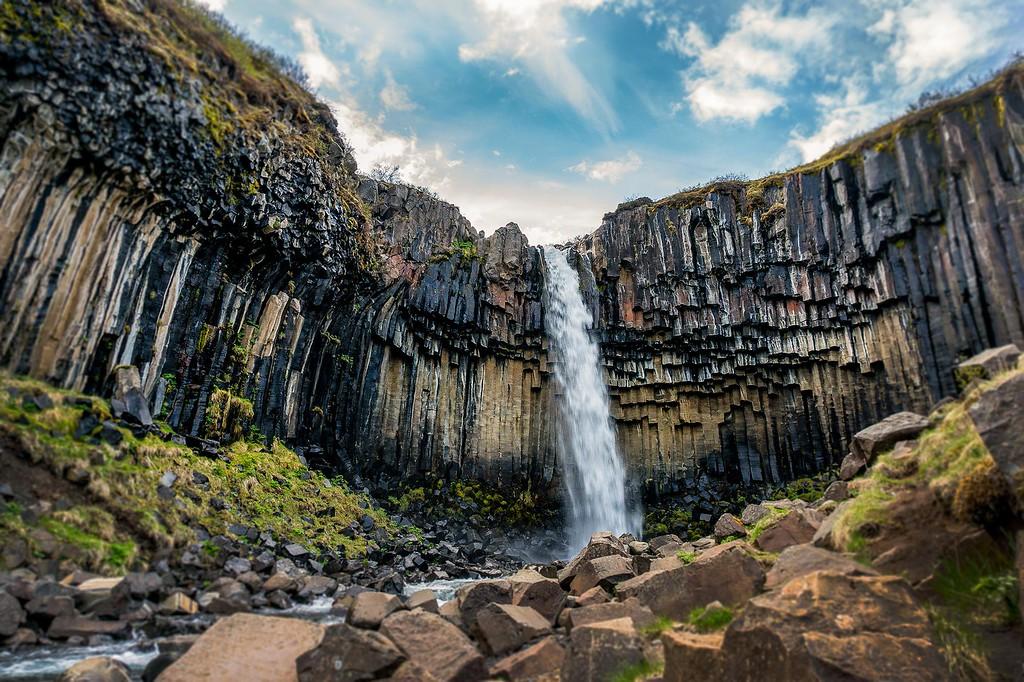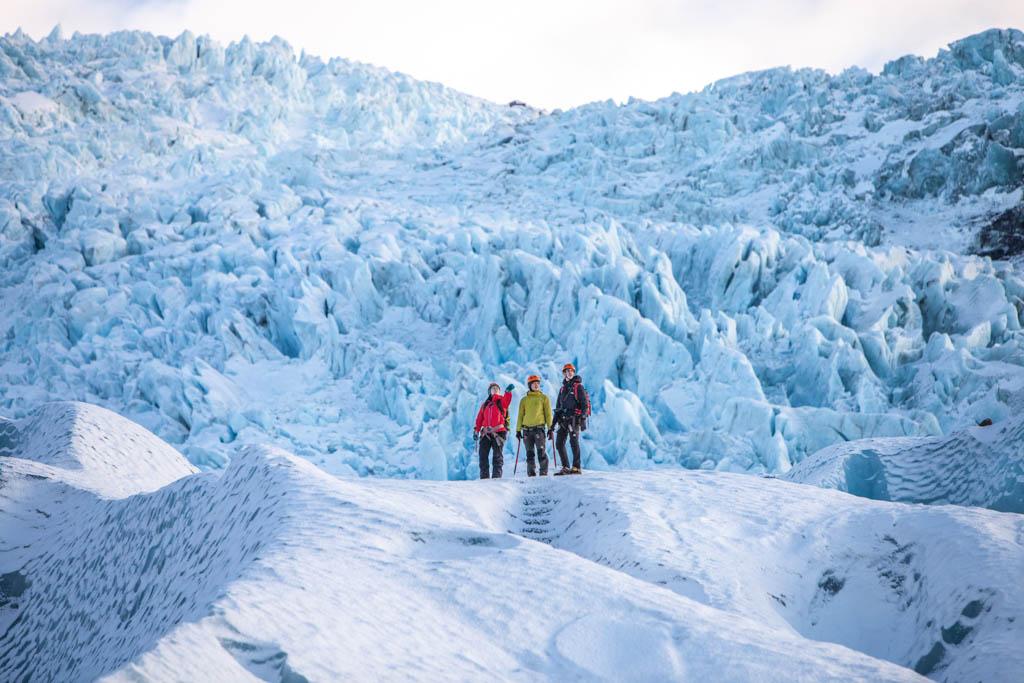Ice Climbing in Iceland – Ultimate Guide to Glacier Adventures and Tours
| All
Have you ever considered ice climbing? If you’re keen to experience a glacial landscape up close but are looking for an activity that’s more challenging than a straightforward hike, then this might be just the ticket. In this guide we’ll take a look at the top destinations in Iceland for ice climbing, which are Sólheimajökull which extends from Myrdalsjökull, and some outlet glaciers of Vatnajökull.
Also, we’ll offer insights into the different types of ice climbs available, cover the essential safety information, the best time of year to embark on an ice climb and the gear you’ll need. Once you’ve read this guide, you can be confident that you’ll choose the day tour that‘s right for you.
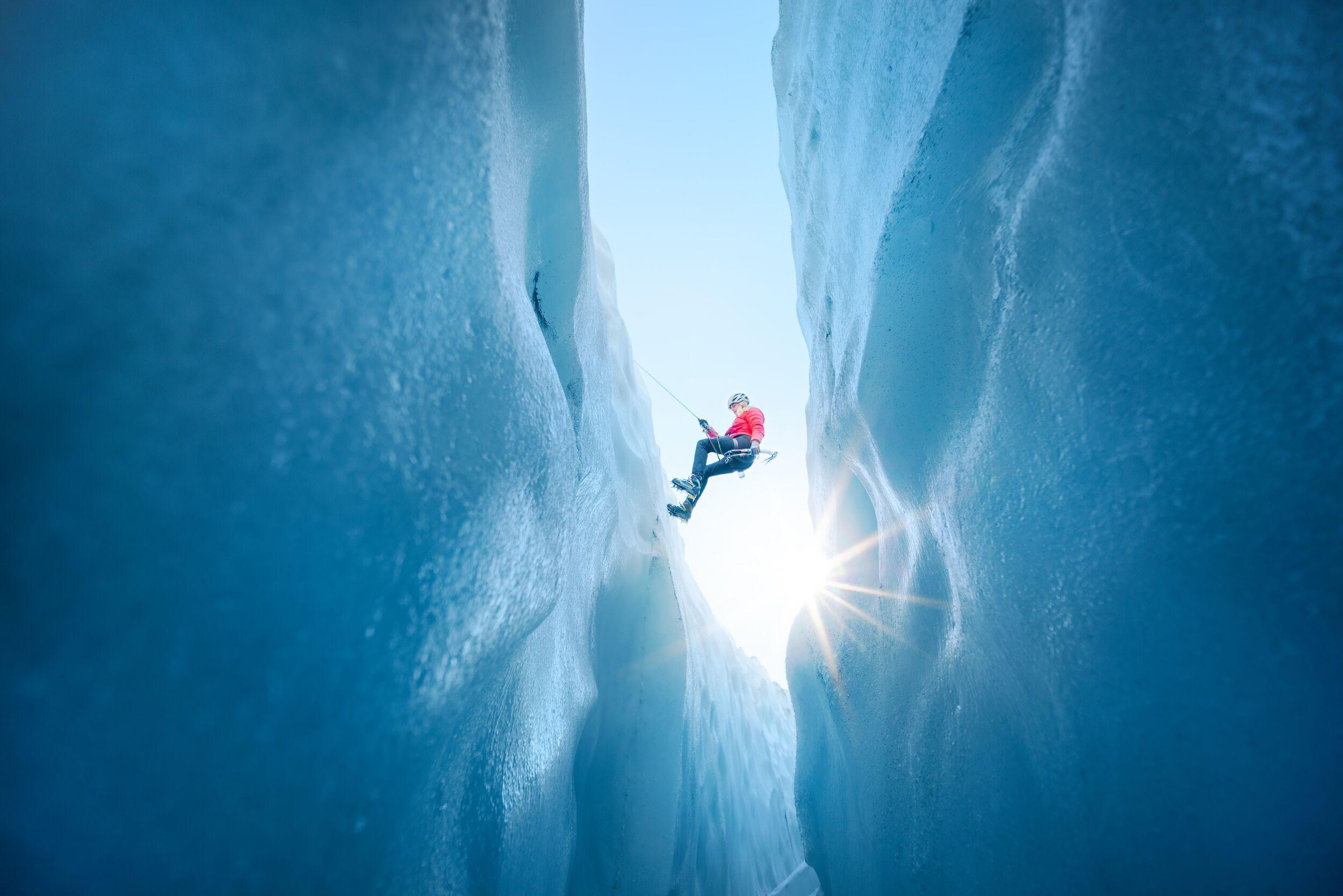
What is Ice Climbing and How Does it Differ from Hiking on a Glacier?
Glaciers are magnificent landforms that create the jaw-dropping backdrop for many travellers in Iceland. Jaw-dropping in their scale and their beauty, they are ever-present as you tour the country, a breathtaking reminder of the power of nature. The vivid blue of compacted ice and the striations caused by ash falls from long-past volcanic eruptions gives them a diversity of colour and texture that is nothing short of incredible.
Ice climbing in Iceland is an adventurous activity that takes place on a wall of ice, such as that which tumbles over a cliff face at the end or edge of a glacier. Essentially there are two types of ice climb: one involves tackling frozen flows of water such as waterfalls and the other traverses high altitude compacted snow and ice.
Though people have by necessity clambered over glaciers for much longer, we can trace its history as a recreational pastime to the 19th century; crampons were only invented in the early 20th century. It’s hugely popular and the ideal opportunity for you to put the Ice- into Iceland during your trip.
Hiking on a glacier is typically less strenuous than an ice climb as mostly the surface you’re traversing will be flatter rather than vertical. An ice climb is also more technical, though full instruction will be given, so if this is your first time, you’ll have the satisfaction of accomplishing a new skill. Incidentally, if you’ve prior experience in rock climbing, you’ll be using some of the same muscles, though unlike rock climbing you won’t be gripping with your hands.
Both activities give you a chance to see a glacier’s features at close quarters. These tongues of ice look impressive from a distance as you can really appreciate their scale, but as you get nearer the details become more apparent: icy ridges and plunging crevasses. Though you might see an ice wall on a glacier hike, you won’t conquer one unless you sign up for an ice climb.

Five Popular Glacier Tours in Iceland that Will Blow Your Mind
Discover which five glacier tours are the most sought-for and why. Check out trips with extraordinary ice formations, the dazzling spectrum of colours on the ice, glacier and ice cave combos or full-day tours that take in the south coast highlights along with an easy glacier walk. Read more
Where Can You Go Ice Climbing With Us?
In Iceland, any stable glacier can be the location for a thrilling ice climb. You’ll find the most opportunities on Vatnajökull, as this is the country’s largest, boasting many smaller outlet glaciers with different characteristics. Broadly speaking, we focus on two areas: Sólheimajökull and Skaftafell, both in the south of the country.
The former is the easier of the two; we’d recommend Sólheimajökull for those trying ice climbing for the first time as it makes the ideal introduction to this adrenaline-fuelled activity. Accompanied by a guide, this fun and easy ice climb is suitable for anyone with a reasonable level of fitness and can accommodate children aged 14 and over. In all, you’ll spend about three hours up on the ice; some of the time will be spent hiking.
Our Skaftafell tour is a little more difficult though no prior experience is necessary if you feel you can handle it. We run it as a small group, private activity so the level of skill required can be adjusted according to your party’s needs.
This means we can be flexible, adapting the pace and challenge to accommodate novices or ramping things up to keep experienced climbers happy. Just as with the Sólheimajökull tour, the emphasis is on enjoying ourselves as we safely immerse ourselves in this majestic environment.
Ice climbers who already have a lot of experience might wish to enrol in our Mountain Skills course. Suitable for over 18s only, it lasts six days, giving you the chance to hone your rope skills and reach an outstanding level of proficiency.
Essential Safety Information for Anyone Considering an Ice Climb
Glaciers are dynamic environments. Though you can’t see it – except in the event of a calving episode or avalanche – the ice is moving all the time, creeping downhill under the influence of gravity. The glacier has a plastic-like quality which enables it to move over uneven terrain, but this also means that it can split, leaving gaping crevasses in the ice.
For this reason, it is unsafe to go up on a glacier or embark on an ice climb without a guide.
You need the expertise that comes from someone deeply familiar with the terrain and with the conditions that may have altered the nature of the glacier in the days, weeks and months leading up to your visit. Moulins and crevasses may be partially or fully concealed by snowfalls, making this a perilous space for the uninitiated.
In the company of an experienced guide, the risks recede considerably. Participants on our tours are given full instruction by a qualified and competent teacher; your safety and wellbeing is their priority at all times. There are safety and emergency protocols that are followed by all reputable tour operators to ensure that even in when something unexpected happens, your guide is fully prepared for it.
You’ll be shown how to use the equipment you have been loaned to make your ascent and descent. There’ll be ample time for you to ask questions, both before you set out and during the activity itself.

The Best Time of Year for Ice Climbing in Iceland
Unlike ice cave tours, which usually take place during the winter when the ice within the glacier is most stable, some tours on the ice are better in the warmer months. It really depends on what part of the glacier you are going to do your ice climb on. Our Sólheimajökull ice climb takes place all year-round, while the Skaftafell ice climbing tour can be booked between June and August.
Beginners typically find summer ice climbs easier as the ice isn’t so hard – in winter, it can be tough to get your equipment in. However, if you are keen to climb a frozen waterfall in a glacial environment, such tours normally are available in winter only.
How to Prepare for an Ice Climb
The specialist gear that you’ll require for your ice climb will be provided for you, so there’s no need to invest in it yourself. We need to keep you safe in this dangerous environment so wearing a helmet is a must at all times. Crampons are also supplied so that you will have sufficient grip on the slippery surface of the ice, both as we reach the site and tackle the vertical ascent.
In addition, we’ll supply ice axes, ropes and harnesses. These will ensure that you can climb safely. The ice of the glacier you’re climbing on is densely compacted. This means it’s incredibly hard – you might liken it to concrete – so the anchors that your guide places in the ice are easily able to hold your weight.
You will need to prepare too, as the importance of the correct type of clothing shouldn’t be underestimated. Though this activity will take place during the warmer months, in such close proximity to the ice you will feel the impact of the low temperatures coming off the ice and potentially a wind chill as well. It’s absolutely vital, therefore, that you are properly dressed to cope with such weather conditions but make sure you can move your limbs easily.
Begin with some high quality base layers; these thermals will help trap warm air against your skin. They’ll need to cover your legs and torso as well as be able to wick away moisture. On top, layer up with appropriate warm clothing. Performance gear is ideal, but any suitable fleece or wool items will ensure that you keep out the cold.
A thick jacket is also essential as you’ll need to keep out the wind and possibly rain, sleet or snow. Choose a good brand known for its effectiveness. A snug hat – one that’s not likely to blow away but that also will fit under your helmet – is necessary to avoid heat loss from your head. Add gloves and either a snood or balaclava to protect your face.
Finally, footwear needs careful consideration. A decent pair of hiking boots with a thick tread will keep you upright before you pull on those crampons. Ankle support is also a must; this isn’t the place to risk a sprained ankle or worse. Don’t forget your camera too as you’re going to want to record this moment in your life for posterity.
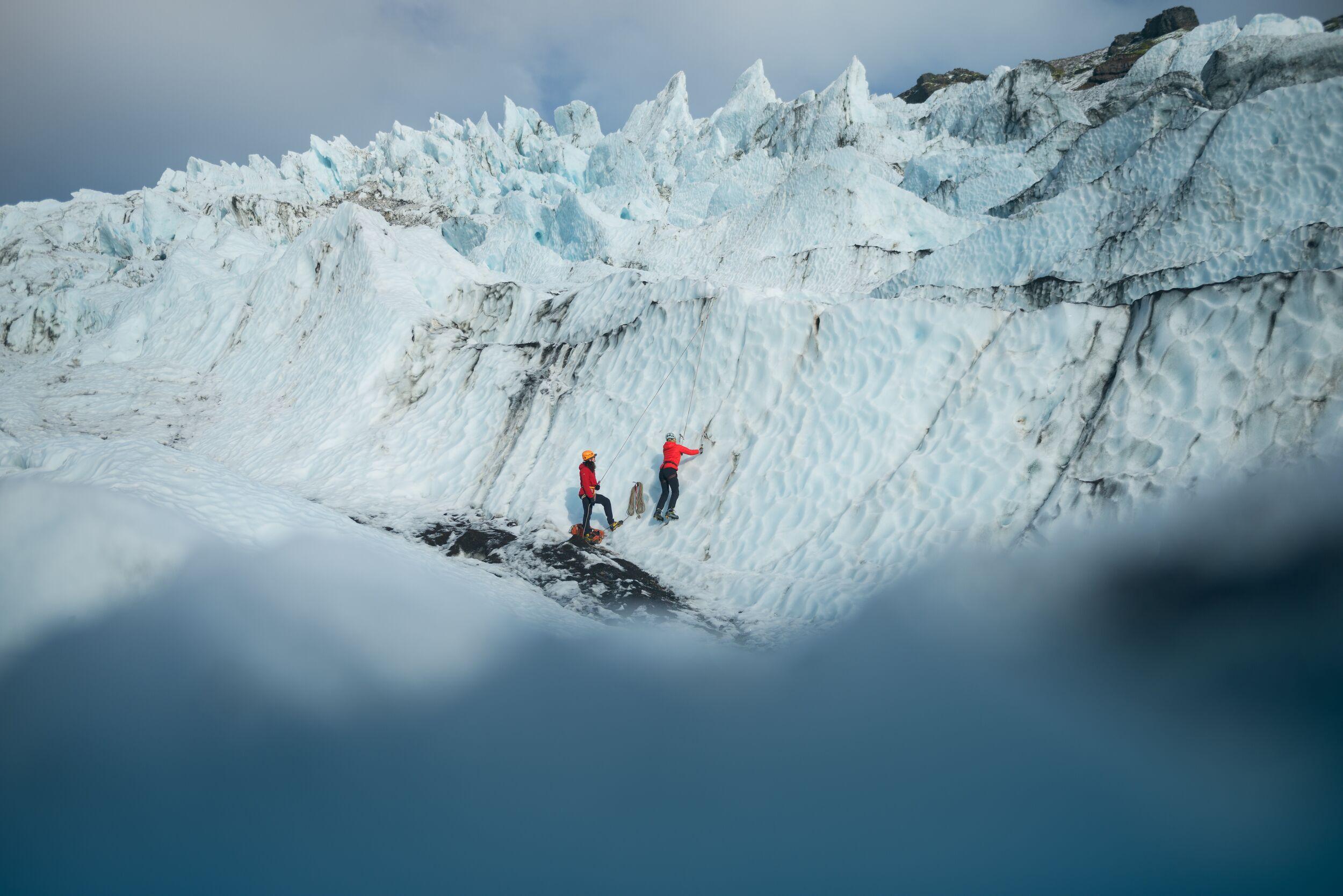
How To Choose the Right Ice Climbing Tour
As you have seen, there are a range of options for anyone considering a glacier adventure in Iceland. It’s really important that you are honest about your level of fitness and ability before making the decision about which tour to book. Some are far more suitable for beginners than others; conversely experienced ice climbers will be frustrated if their activity is too simple.
For instance, if you have certain health conditions, such as back problems or issues with your joints, this activity may be too physical for you. Ice climbs are exhilarating, of course, but also require qualities such as stamina and endurance. If you don’t think you can manage it, you might still be able to switch up an ice climb for a glacier hike. So, get in touch and let us help you work out what’s within your capabilities and what might be a little too ambitious.
Can You Do It? Yes You Can!
You might think that an ice climb is daunting, but if you don’t try, you’ll never feel the joy that accompanies the sense of accomplishment of a completed climb. Of course, those without a good head for heights will need to steel themselves for an activity such as this, though an ice climb is a good way of facing your fears in controlled conditions with lots of encouragement and support as you conquer the wall of ice.
If you lose your footing, there’s no need to panic: you won’t plummet to the bottom. Instead you’ll dangle on the rope as the guide calmly gives you step by step instructions on how to regain your position and continue the climb. If the thought of this fills you with horror, we’d suggest you opt for a glacier hike in Iceland instead.
We want you to have fun and not spend the duration of the tour fearful of what’s to come. If you need help figuring out which of our tours would be most suitable, first take a look at the descriptions on our website but don’t hesitate to contact us if you have additional queries. We will be happy to offer advice and answer any questions you might have.
Ice climbing is a challenging activity but this is what makes it such a cool thing to do while you’re in Iceland. The feeling you have as you’re suspended against the ice face is extraordinary; glaciers provide us with some of the most striking landscapes in the country and the chance to get a different perspective on this remarkable scenery is not one you should pass up. Why not bite the bullet and sign up for an adventure with us? Ice climbing in Iceland is sure to be the highlight of your trip!
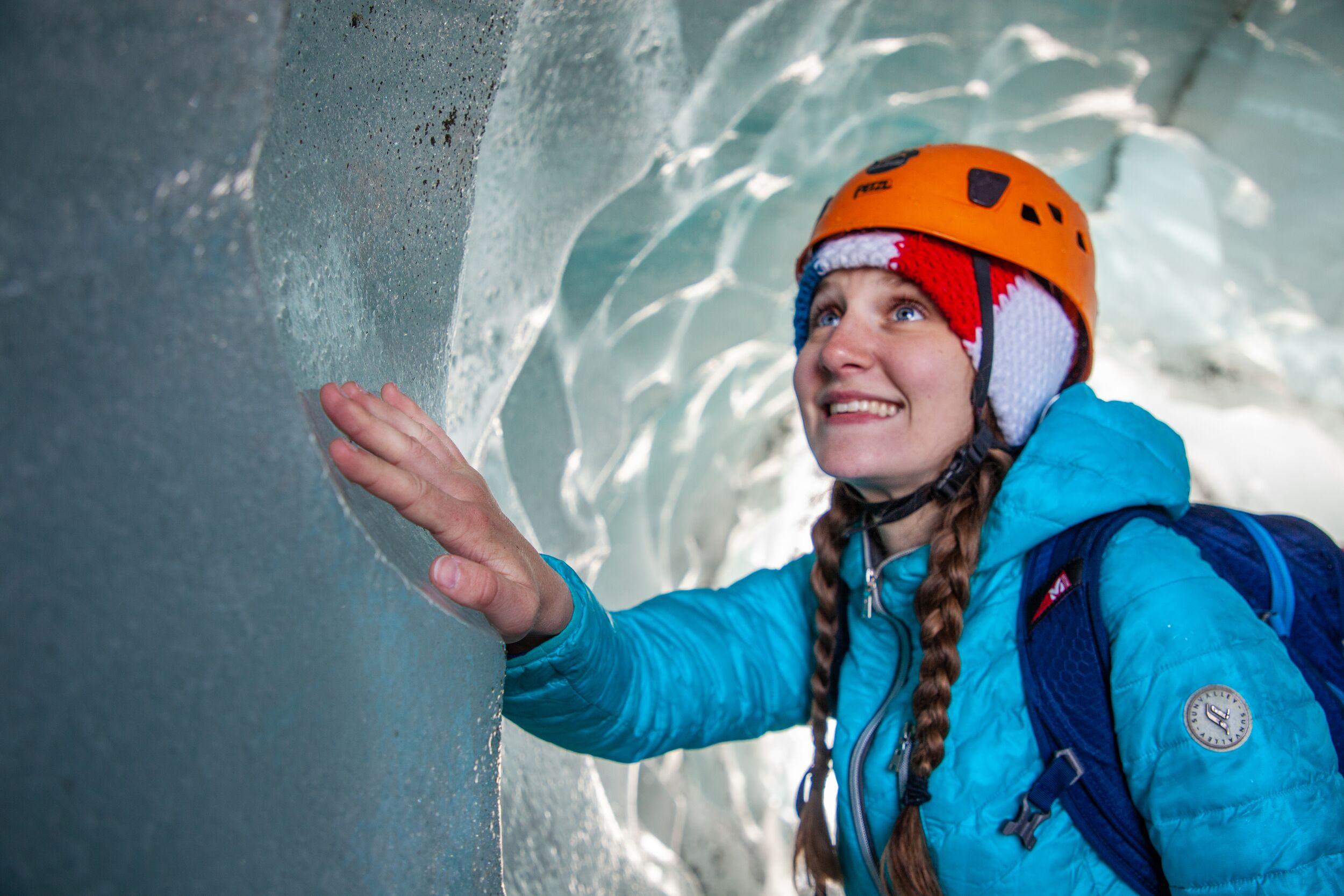
Your Ultimate Guide to Sólheimajökull
A living mass of ice containing all the shades of glassy white, ash grey and aqua-blue, you have to get up close and personal with Sólheimajökull to appreciate its beauty. How about combining a walk on the glacier with ice climbing or kayaking on the glacier lake?
Read more
Keep me informed about the Icelandic Mountain Guides Blog
Outdoor adventure in Iceland is our specialty. Subscribe to our free monthly newsletter to learn when to go, what to do and where to have the best adventures in Iceland.
Related Blog Posts
Related Tours

Skaftafell Ice Climbing
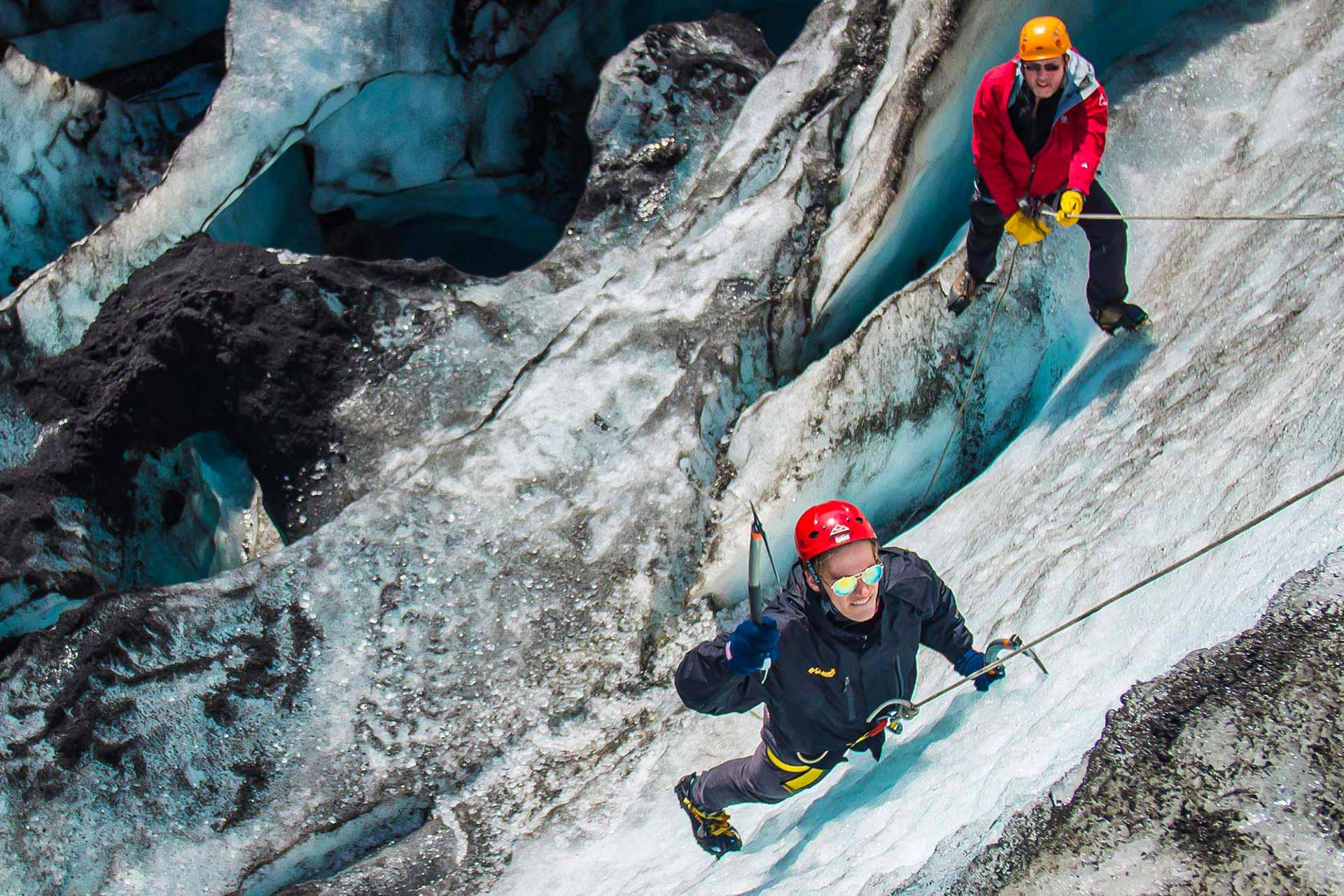
Skaftafell Glacier Hike and Ice Climbing

Sólheimajökull Glacier Hike and Ice Climbing

